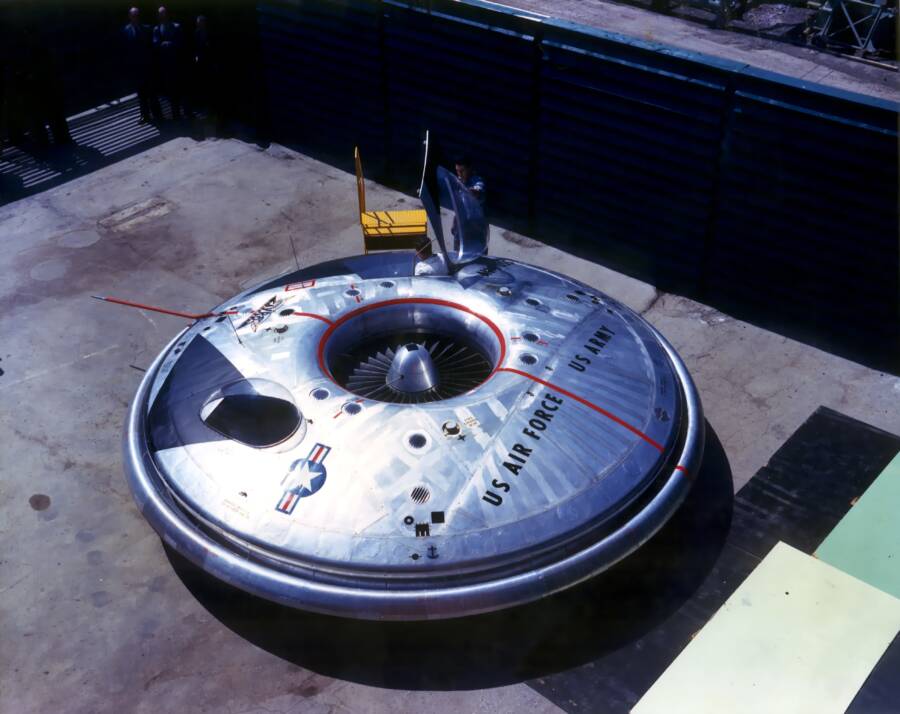Project 1794: When The U.S. Military Tried To Construct A Supersonic Flying Saucer

Public DomainThe Avro Canada VZ-9 Avrocar, a saucer-style craft created by Avro Canada as part of a secret U.S. government operation.
Theories about UFOs have circulated ever since they were first seen in the skies above. While many believers claim that flying saucers are the technologies of extraterrestrials, there are also those who have theorized that UFOs could in fact be human-made — that they are, perhaps, some secret vehicles developed by various world governments.
Despite most scientists agreeing that no technology on Earth could do what many UFOs allegedly can, that doesn’t mean experts haven’t tried.
Enter Project 1794, a now-declassified project undertaken by the U.S. Air Force that sought to create a saucer-type aircraft. This aircraft was meant to be a supersonic, combat-ready saucer that could be used to shoot down Soviet bombers — though, obviously, this never came to fruition.
The project began in the 1950s as a joint collaboration between the U.S. Air Force and the Canadian company Avro Aircraft. The Air Force specified that they wanted this craft to be unlike anything ever seen before. This saucer-shaped craft would be able to travel through the Earth’s stratosphere at a top speed of 2,600 miles per hour, reach as high as 100,000 feet in altitude, and take off and land vertically. It could be deployed practically anywhere, and the shape would make it perfect for stealth operations.
In theory, it would be exactly like the UFOs it took inspiration from. Some have even suggested that test units accounted for some UFO sightings in the 1950s — except this aircraft couldn’t do most of what it was supposed to do.
Similar military-funded aircraft, such as the VZ-9 Avrocar, also made thrilling promises. The VZ-9 Avrocar was supposed to travel at speeds of up to 300 miles per hour, but, according to The National Interest, it only reached 35 miles per hour. It also only made it a few feet off the ground, and it was effectively inoperable because it constantly pitched and rolled.
Clearly, in the 1950s, the technology just wasn’t there for a supersonic flying saucer, and Project 1794 was shuttered in the early 1960s. Funnily enough, the failure of Project 1794 only adds to the mystique around actual flying saucers, because it shows just how advanced this technology really is.





